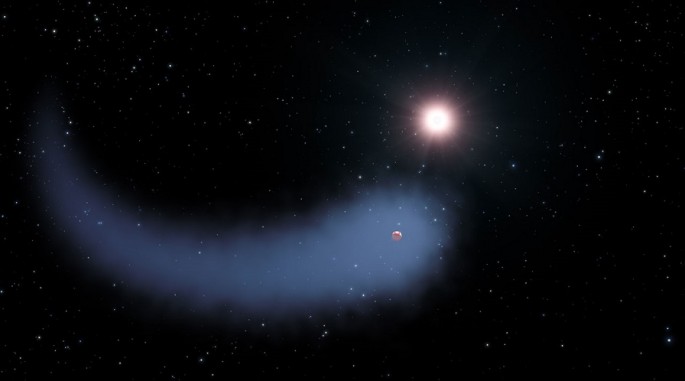Astronomers have detected an exoplanet in a nearby star that is apparently already losing its hydrogen atmosphere which is now observed as shedding this enormous cloud into deep space as scientists have named it "The Behemoth".
This alien world is extremely hot and estimated to be the size of Neptune where its atmosphere is slowly disappearing and evaporating due to extreme levels of radiation emitted by its host star, according to scientists.
To date, the planet is now boiling away and where it is slowly forming a tail of gas similar to a comet's which is growing huge, 50 times larger than the star. Astronomers have obtained this data using observations from the NASA and ESA Hubble Space Telescope in order to monitor this cosmic event.
According to lead author David Ehrenreich of the University of Geneva, Switzerland, this cloud is truly remarkable, however, this evaporation rate does not threaten the planet's geosystem right now. Its host star is now a faint red dwarf meaning it was more active in the past.
Researchers believe that this strong radiation originating from the star was probably much stronger when it was younger where it stripped off the exoplanet's atmosphere at a faster rate during its first billion years in existence. Scientists estimate as much as 10 percent of the atmosphere enshrouding the planet was stripped away in a span of several billion years.
The planet known as Gliese 436b provides a better understanding about how exoplanets that possess hydrogen atmospheres can apparently be stripped away by their host star that leaves behind only rocky cores where scientists classify these as hot Super Earths.
Astronomers specifically used the capabilities of the Hubble Space Telescope to detect the ultraviolet light emanating from "The Behemoth" since most of Earth's atmosphere can block this ultraviolet light if ground based observations are utilized.
Ehrenreich describes the planet as transforming into a monstrous thing when it is observed with Hubble's ultraviolet "eye" since the exoplanet cannot be viewed with visible wavelengths.
During the course of the infant stages of the solar system, Earth also possessed an atmosphere rich in hydrogen where a similar evaporation event also occurred according to astronomers.
The expoplanet Gliese 436b is in close orbit with its host star Gliese 436 where its orbit completes after 2.6 days. The planet is believed to be 6 billion years old which is located some 30 light years from Earth making it one of the closest known alien worlds outside the solar system.
This study is published in the journal, Nature.



























